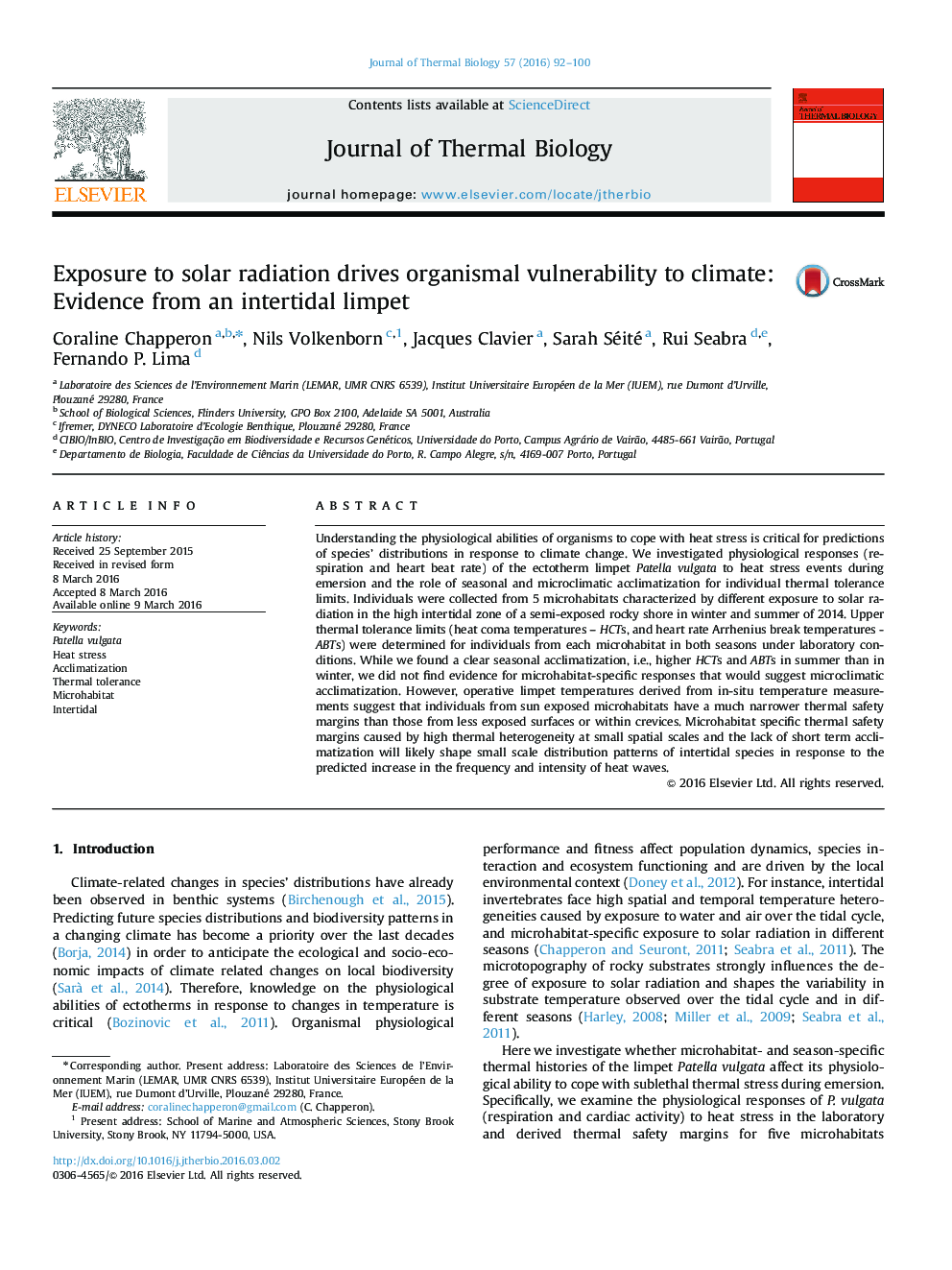| Article ID | Journal | Published Year | Pages | File Type |
|---|---|---|---|---|
| 2842728 | Journal of Thermal Biology | 2016 | 9 Pages |
•Limpet thermal sensitivities and limits were investigated during emersion heat stress.•Seasonal and microclimatic acclimatization for thermal tolerance limits were examined.•Limpets showed seasonal acclimatization but a lack of microclimatic acclimatization.•Narrower thermal safety margins were observed on sun exposed surfaces.•Thermal heterogeneity at microscale will likely shape future distribution patterns.
Understanding the physiological abilities of organisms to cope with heat stress is critical for predictions of species’ distributions in response to climate change. We investigated physiological responses (respiration and heart beat rate) of the ectotherm limpet Patella vulgata to heat stress events during emersion and the role of seasonal and microclimatic acclimatization for individual thermal tolerance limits. Individuals were collected from 5 microhabitats characterized by different exposure to solar radiation in the high intertidal zone of a semi-exposed rocky shore in winter and summer of 2014. Upper thermal tolerance limits (heat coma temperatures – HCTs, and heart rate Arrhenius break temperatures - ABTs) were determined for individuals from each microhabitat in both seasons under laboratory conditions. While we found a clear seasonal acclimatization, i.e., higher HCTs and ABTs in summer than in winter, we did not find evidence for microhabitat-specific responses that would suggest microclimatic acclimatization. However, operative limpet temperatures derived from in-situ temperature measurements suggest that individuals from sun exposed microhabitats have a much narrower thermal safety margins than those from less exposed surfaces or within crevices. Microhabitat specific thermal safety margins caused by high thermal heterogeneity at small spatial scales and the lack of short term acclimatization will likely shape small scale distribution patterns of intertidal species in response to the predicted increase in the frequency and intensity of heat waves.
